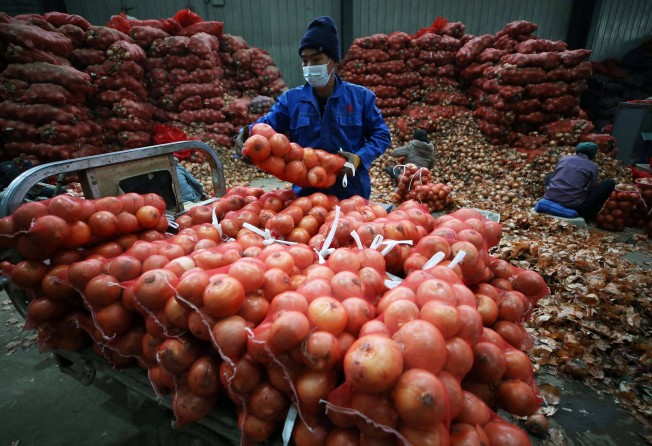
How Asia’s bond markets have withstood rising global inflation
- Although the region has not been immune to Covid-19 economic shocks, shorter lockdowns and more cautious reopening have kept core inflation rates comparatively low and bond yields positive

Bond investors will be glad to see the back of 2021. The Bloomberg Global Aggregate Index, a leading gauge of investment grade government and corporate debt, delivered a negative return of 4.8 per cent this year, its worst performance since 1999.
In the United States, which comprises 38 per cent of the index, bond prices have fallen sharply, with the yield on two-year Treasury bonds – which is sensitive to interest rate expectations – surging since late September to 0.75 per cent.
The dramatic rise in inflation, which erodes the real value of the fixed interest rates that bonds pay, has caused many of the world’s major central banks to signal their readiness to respond to the increase in prices with tighter monetary policy.
The US Federal Reserve, which is contending with an inflation rate that hit a four-decade high of 6.8 per cent last month, now accepts that it underestimated the severity of the inflation shock and anticipates as many as three rate hikes next year.
In Bank of America’s latest fund manager survey, published on December 14, the hawkish pivot by central banks and the surge in inflation were cited by respondents as the two biggest threats to asset prices.
However, one region has proved relatively resilient to the inflation-induced sell-off in bond markets. Since the Covid-19 pandemic erupted, Asia’s bond markets have performed surprisingly well considering the region is a net importer of energy, and has suffered the same surge in commodity prices as everywhere else in the world.
The Asia-Pacific component of the Bloomberg Global Aggregate Index posted a positive return of 5.7 per cent this year. The outperformance is more striking among Asia’s developing economies, which are much more vulnerable to a tightening in financial conditions.
According to data from JPMorgan, an index of Asian emerging-market local currency government bonds lost just 2.4 per cent in the first 11 months of this year. By contrast, a gauge of east European and Middle Eastern domestic debt lost 15.9 per cent, only slightly less than its Latin American equivalent.
Since the virus struck, yield-hungry foreign investors have piled into Asian emerging market bonds, buying US$165 billion of local debt this year, an all-time high, data from JPMorgan shows.

While mainland China accounts for the bulk of the purchases, all other major Asian developing economies’ bond markets have either enjoyed inflows or suffered minor outflows.
The resilience of Asia’s debt markets is mostly attributable to relatively subdued inflationary pressures across most of the region. In Japan, headline inflation stands at a meagre 0.6 per cent.
More tellingly, core rates of inflation – which strip out volatile food and energy prices – in China, Indonesia, Thailand and Malaysia were below 1.5 per cent last month, compared with 4.9 per cent in the US and 2.6 per cent in the euro zone.
The main reason the rise in inflation in Asia has been comparatively mild is because of the region’s more effective handling of the pandemic. While Asia was hit much harder by the virus this year, it has been able to manage the pathogen with less economic disruption than in Western countries.
Many Asian nations eschewed nationwide lockdowns, or at least ensured they were imposed for only a relatively short period and were limited in scope. Just as importantly, Asia has been much more cautious in reopening its economies. The combination of these two factors has had significant consequences for inflation.
The pressure on supply chains stemming from the lockdown-induced shift in spending from services to goods, and back to services as restrictions are lifted, has been less severe in Asia.
This has reduced the intensity of the demand and supply shocks that have driven prices higher. East Asia’s position as a global manufacturing hub has also helped ease supply constraints within the region.
Lower inflation rates across much of Asia have kept real, or inflation-adjusted, bond yields relatively high, relieving pressure on local currencies and, crucially, allowing the region’s central banks to refrain from raising rates aggressively.
Although Asian central banks will face more pressure to raise rates next year – especially in India where inflation is running close to 5 per cent – lower levels of inflation will continue to underpin demand for the region’s bonds.
This is likely to accentuate divergences in monetary policy. While a more hawkish Fed is fuelling a rally in the US dollar, putting emerging market assets under strain, the performance of the yuan has a stronger influence on the currencies of developing economies.
The correlation between the renminbi and an index of emerging market currencies hit a record high this year, data from Bloomberg shows.
With the yuan likely to benefit from further inflows into China’s debt market, driven partly by expectations of looser policy, the currencies and domestic bonds of Asia’s developing economies are less vulnerable to a rise in US borrowing costs.
The inflation scare that has hammered debt markets the world over will continue to be less unnerving in Asia.
Nicholas Spiro is a partner at Lauressa Advisory
